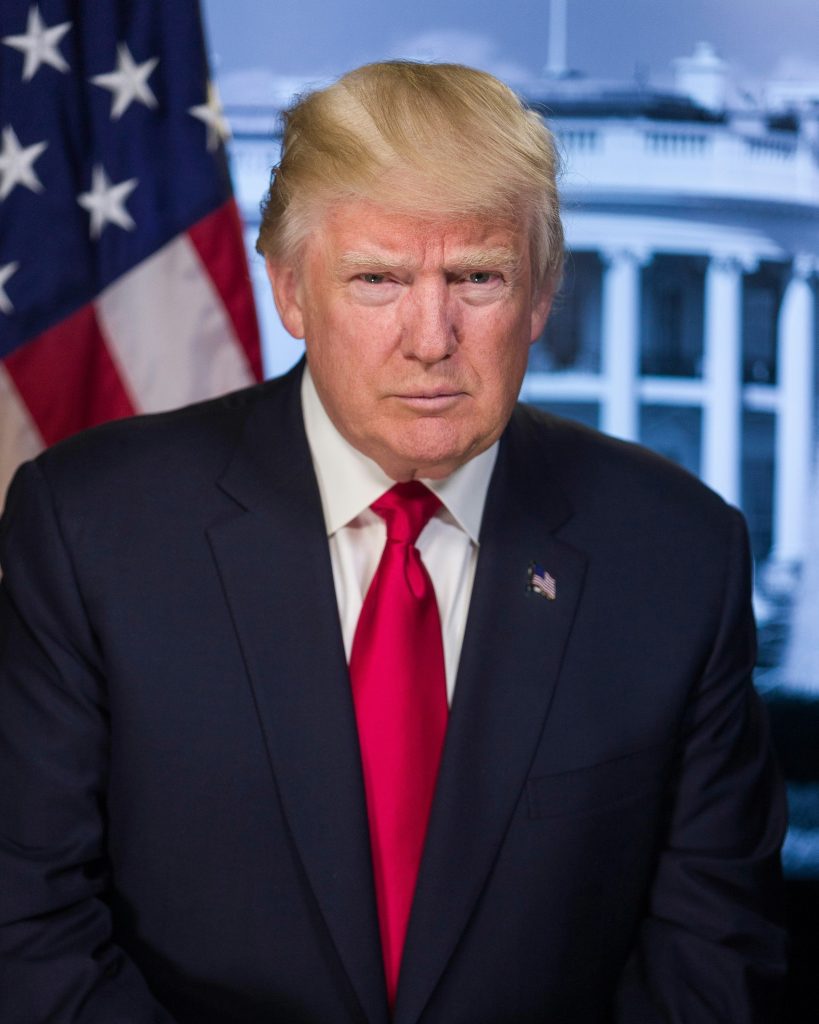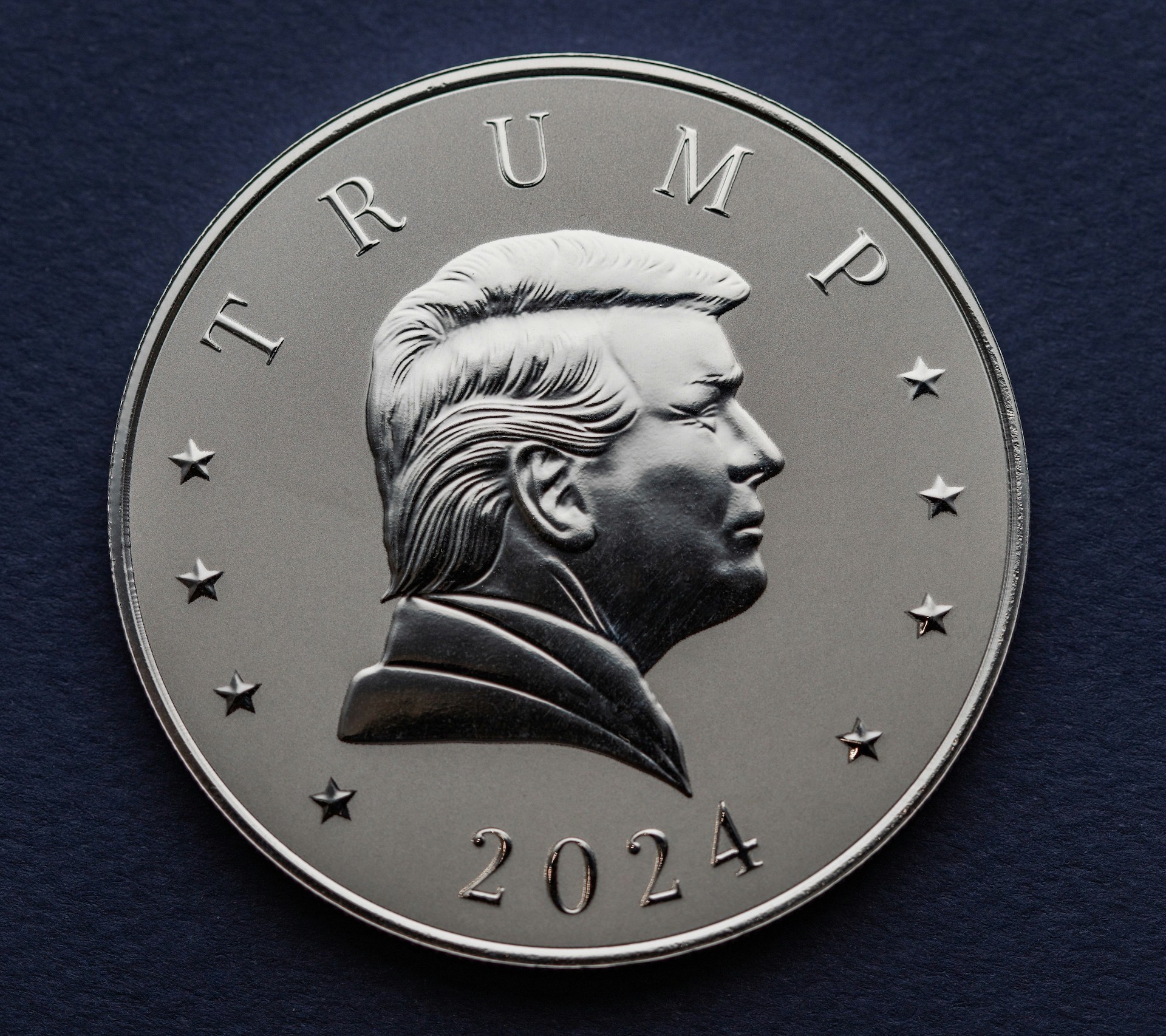As the U.S. presidential race heats up, the possibility of a Donald Trump 2024 victory has raised critical questions: What happens if Trump wins? What if Trump wins the election? This scenario could trigger significant shifts in global markets, often called the “Trump trade.”
But what is Trump’s trade? The term encompasses the market movements and economic changes resulting from Trump’s trade policies, often characterised by protectionism and economic nationalism.
This article will explore the potential impacts of a Trump 2024 victory, examining Trump’s trade policy and trade deals and their implications for investors.

The Trump Trade Legacy
Donald Trump’s first term in office was marked by a bold and often controversial overhaul of U.S. trade policies. His administration pursued a protectionist agenda to prioritise American economic interests, reduce trade deficits, and revitalise domestic industries.
These efforts were instrumental in shaping the global trade landscape, giving rise to what is now called the “Trump trade effect” Below, we’ll explore the key pillars of Trump’s first-term trade strategy and their far-reaching implications.
1. Tariffs on Chinese Goods: The Catalyst of a Trade War
One of the most defining aspects of Trump’s trade policies was his decision to impose tariffs on Chinese imports. This move was justified as a response to what the administration viewed as unfair trade practices, including intellectual property theft and currency manipulation by China.
- Scope of the Tariffs: In 2018, Trump imposed tariffs on over $360 billion worth of Chinese goods, covering everything from electronics to agricultural products.
- Chinese Retaliation: In response, China levied its tariffs on U.S. exports, including soybeans, automobiles, and other key commodities.
The ensuing trade war profoundly impacted global supply chains, increasing production costs for multinational companies and forcing many to reevaluate their sourcing strategies. The trade tensions also contributed to market volatility, with equities and commodities reacting sharply to each new tariff announcement.
2. USMCA: A Modernized Trade Agreement
Another major milestone of Trump’s trade legacy was the replacement of the North American Free Trade Agreement (NAFTA) with the United States-Mexico-Canada Agreement (USMCA).
- Key Changes in USMCA:
- Automotive Industry: The new agreement required that 75% of a vehicle’s components be manufactured in North America, up from 62.5% under NAFTA, to qualify for zero tariffs.
- Labor Protections: USMCA included provisions aimed at improving labor conditions, particularly in Mexico, with a focus on increasing wages for auto workers.
- Intellectual Property and Digital Trade: The agreement introduced stronger protections for intellectual property and established rules for digital trade, reflecting the modern economy’s realities.
The USMCA was seen as a win for U.S. manufacturers and workers, particularly in the automotive and agriculture sectors, although critics argued it provided limited benefits compared to NAFTA.
3. Steel and Aluminum Tariffs: Protecting American Industry
In 2018, Trump invoked Section 232 of the Trade Expansion Act to impose tariffs of 25% on steel imports and 10% on aluminium imports. The administration justified these measures on national security grounds, arguing that the U.S. reliance on foreign metals posed a strategic risk.
- Impact on Domestic Producers: The tariffs significantly boosted domestic steel and aluminium producers, who saw reduced import competition.
- Downstream Effects: However, industries that rely on steel and aluminium, such as automotive, construction, and beverage manufacturing, faced higher input costs. This sparked debates over whether the tariffs ultimately benefited the broader economy.
4. Broader Implications of Trump’s Trade Policies
Trump’s trade policies were not limited to specific tariffs or agreements; they signalled a broader shift toward economic nationalism. This approach emphasized reducing dependence on foreign goods, reshoring manufacturing jobs, and renegotiating trade deals to secure more favourable terms for the U.S.
- Global Supply Chain Disruptions: Companies faced pressure to relocate operations closer to the U.S. or diversify their supply chains to avoid tariff exposure.
- Market Volatility: The uncertainty surrounding trade negotiations and tariff implementations led to significant fluctuations in financial markets.
- Impact on Global Trade Relations: Trump’s policies strained relationships with traditional allies, including the EU and Canada, but also opened the door for new trade discussions with countries like Japan and the UK.
5. The Birth of the Trump Trade Effect
The cumulative impact of these policies was the emergence of the “Trump trade effect,” characterized by:
- Shifts in Market Dynamics: Certain sectors, such as domestic manufacturing, experienced growth, while others, like agriculture, struggled under retaliatory tariffs.
- Currency Movements: Trade tensions often led to fluctuations in the U.S. dollar and other major currencies like the Chinese yuan and euro.
- Investment Trends: Protectionist policies spurred investor interest in sectors poised to benefit from domestic-focused trade strategies, such as steel, energy, and infrastructure.
Potential Trade Policy Changes Under Trump in 2024
Investors and analysts ask: Who is winning—Kamala Harris or Trump? If Trump is winning, his second term could see a return to these protectionist strategies, potentially sparking new economic trends. Here’s several vital areas that should be the focus.
Key Areas of Focus
Should Trump win, several vital areas could witness substantial shifts:
- Tariffs and Bilateral Trade Agreements: Trump will likely reintroduce or increase tariffs on imports, particularly from China.
- Global Supply Chains: Companies might face pressure to relocate manufacturing to the U.S., reinforcing domestic supply chains.
- Trade Agreements: Expect renegotiations of existing and new Trump trade deals designed to favour American industries.
Industry-Specific Impacts
- Manufacturing and Technology: These sectors could see a boost from new incentives and tariffs on foreign competitors.
- Agriculture: Farmers might benefit from targeted subsidies but face challenges due to retaliatory tariffs.
- Trump Trade Stocks and ETFs: Investors will watch for growth in sectors aligned with Trump’s policies, creating opportunities in Trump trade stock or ETF investments.

The Impact of Trump’s Trade Policies on the U.S. Dollar
Currency Strength in a Trump Win
A critical question for financial markets is how Trump’s trade policy will impact the U.S. dollar. As of now, the dollar has surged against major currencies, including the Australian Dollar (AUD), New Zealand Dollar (NZD), Japanese Yen (JPY), and Euro. This strong momentum could continue if Trump wins in 2024.
What Is the Effect of a Strong Dollar?
- Advantages: Lower import costs and reduced inflationary pressures.
- Disadvantages: A stronger dollar makes U.S. exports more expensive, potentially widening the trade deficit.
Currency traders and investors must stay vigilant, as fluctuations in the dollar could present risks and opportunities.
Global Trade Relationships and Market Reactions
Trade Relations with Key Partners
A Trump victory would likely strain U.S. relationships with major economies, particularly China, the EU, and Mexico. As investors ask who is winning, Kamala or Trump, the outcome will heavily influence market stability. If Trump wins, tensions could lead to new tariffs and trade restrictions, affecting global trade flows.
Market Reactions and Volatility
Market volatility is expected to surge in response to Trump’s policy announcements. Already, we’ve seen:
- Nasdaq, Dow, and S&P 500 Futures rose by +1%.
- Russell Index Futures jump by +2.2%.
- Bitcoin hit a record $75,000, reflecting investor interest in alternative assets.
These movements illustrate the market’s sensitivity to political developments, making Trump trade a key theme for traders.
Risks and Opportunities for Investors
Risks
- Trade Wars: Renewed tariffs and retaliatory measures could disrupt supply chains.
- Market Volatility: Uncertainty surrounding Trump’s trade policies could lead to sharp price swings in Trump trade stocks.
- Global Recession Risks: Prolonged trade tensions could slow global economic growth.
Opportunities
Despite the risks, Trump’s policies could create lucrative opportunities:
- Domestic Manufacturing and Energy: Likely beneficiaries of protectionist policies.
- Volatility Trading: Market swings present high-return opportunities for savvy investors.
- Cryptocurrency: With Bitcoin already at $75,000, further gains could follow as investors hedge against market risks.
Now is the time to strategise for those wondering what Trump’s trade is or how to capitalise on Trump’s trade stock.
Donald Trump’s potential 2024 election victory could reshape global trade and investment. From shifts in Trump trade policy to market volatility, the Trump trade effect will present both challenges and opportunities. As investors ponder questions like who is winning—Trump or Harris, the stakes for global markets remain high.
In this election year, understanding the potential impacts on the stock market is key to navigating any turbulence that may come. For Vestrado users, staying informed and proactive will be their best defence—and opportunity.
Whether you’re a seasoned investor or just beginning your trading journey, keep an eye on policies, diversify where possible, and embrace safe-haven investments if needed. Remember, if you’re prepared, each market shift can be a chance to grow.
Stay connected with Vestrado for insights, updates, and strategies tailored to help you make the most of the evolving financial landscape during this critical election period.





